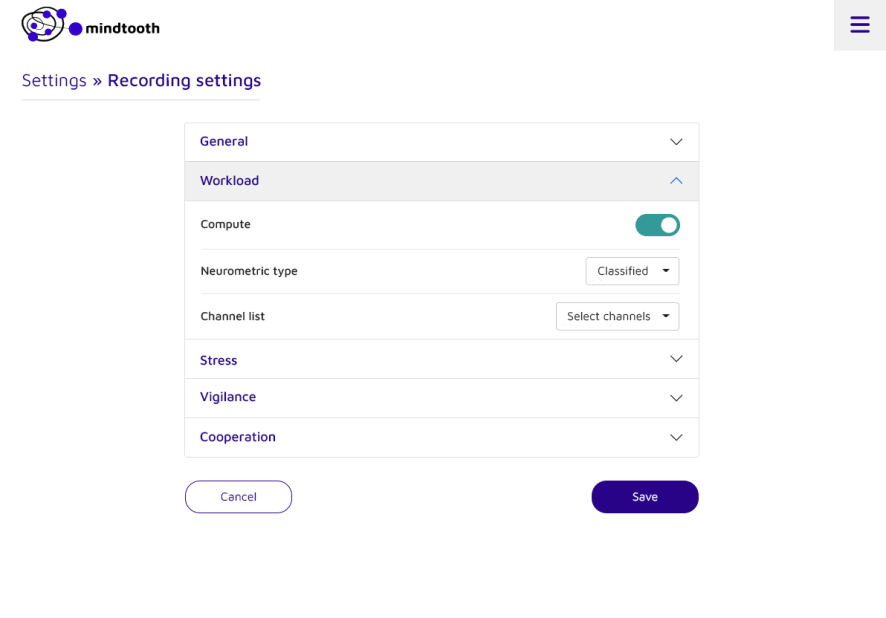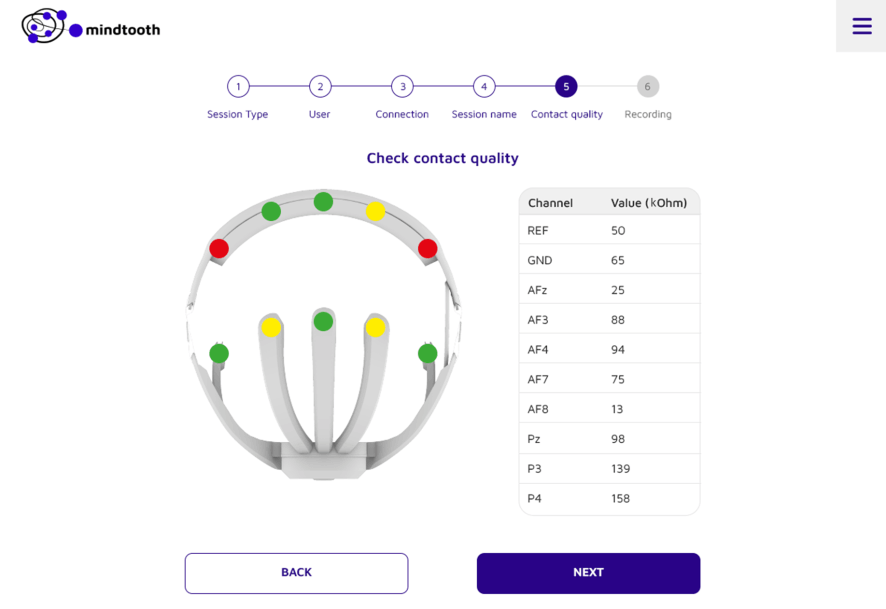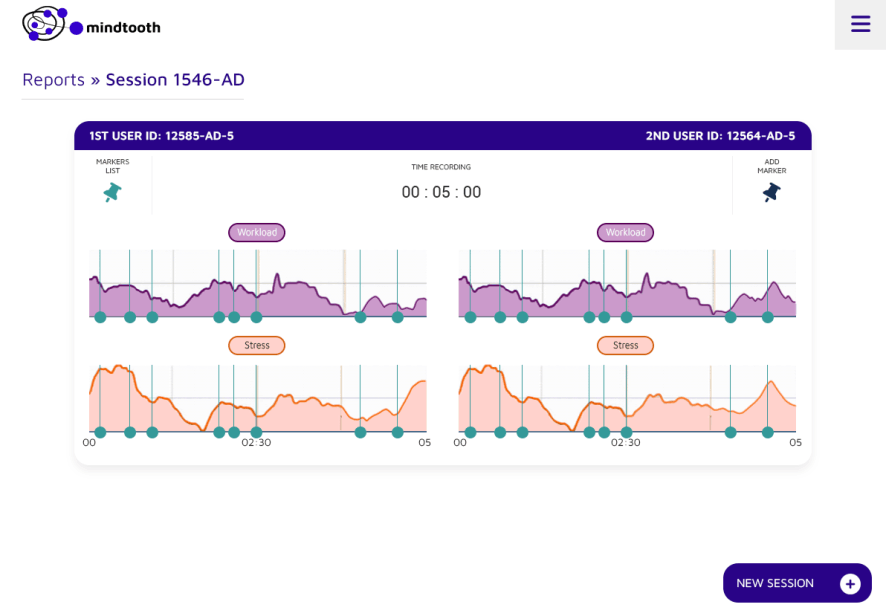The Mindooth System
Touch has been realized as key element of Mindtooth System.

Description of the Mindtooth Headset and Software.
The Touch headset is patented worldwide and protected by copyright.
Touch has been realized as key element of Mindtooth System.

The Mindtooth headset is made in two main parts: front part and rear part. The two parts are held together with an adjustable elastic band. The amplifier will be a click-on amplifier, connected to the headset by magnetic connectors.

Figure 1 - Touch
Headset Front Part
The front part of the headset is hosting five EEG sensors and designed to fit the users forehead. To maximize comfort it is flexible and made of a combination of materials (plastic and textile).
All electrodes pellets and bases for the sponge electrode holders are embedded in the headset together with the wires. The 5 wires are hosted in one flexible sheath that exits on the right side from the front part and enters into the rear part. The sheath with the 5 wires is long enough to permit the elastic bands maximum extension.
Headset Rear Part
The rear part is hosting the ground and reference sensors, the three parietal EEG sensors and the click-on amplifier (Click-On Amp) socket and is made in plastic with a shape that permits it to be slightly flexible to fit the head comfortably.
Ground and reference sensors are fitted to two separate “fingers” on the mastoids. Their position makes it possible to use glasses and headphones while wearing the headset.
The three parietal EEG sensors’ “fingers” are made as a separate part that is fitted and fixed to the rear part of the headset.
The “fingers” have been designed to adapt to the users head shape and all of the parietal EEG sensors’ holders have been prolonged, the center finger is fixed while the other two are fitted to a rotating end-piece of the flexible “finger” in order to make it easier to adapt to all head shapes, split the hair and touch the scalp.
The position of the Click-On Amp socket has been chosen in order to distribute the weight of the Click-On Amp evenly on the back part of the head. To fit and connect the amplifier onto the headset two magnetic pogo-pin connectors clicks onto each other, hence the name “Click-On Amp”. The task is extremely easy and due to the fact that the magnets only allow clicking on in one way, the right way, it is not possible to make a mistake.
The front piece of the housing has the user-interface:
- an entry for the micro USB used to recharge the Click-on Amp’s rechargeable battery. The micro USB entry is placed in this position so that the Click-On Amp can be recharged lying flat on the table.
- an on/off push button and three LEDs to display status information. When the Click-On Amp’s batteries are recharging the LEDs will light up depending on the level of recharge.
The Click-On Amp features an extensive variety of capabilities, all of which contribute to its exceptional EEG quality.

Figure 2 - Click on amp
- Click-On Amplifier with magnetic connectors
- Premium EEG quality, powered by Brain Products
- Bluetooth low energy connection
- Rechargeable battery (up to 3 hours of continuous recording)
- 125 Hz and 250 Hz output data rates
- Sponge-based electrodes (1-2% sodium chloride),
- No residuals in the hair
- Silver/silver chloride electrode material for highest signal quality
- Soft skin contact by sponge top with 1-2% sodium chloride solution




The Mindtooth Software allows to record biosignals from the Touch EEG Headset, and even additional devices (e.g. emphatica, shimmer sensing), to compute Neurometrics of Workload, Vigilance, Stress and Cooperation, and transmit these neurometrics to any kind of 3rd party application.
In particular, the Mindtooth core will be the module delegated to the Neurometrics computation and transmission.
It is written in python given its powerful scientific libraries and its multiplatform adaptability.
It will run on Windows machines such as laptop, tablet and also minicomputer (i.e. Odroid), if required.
The API has been designed, and will be developed accordingly, to allow the consumer applications (namely the third party apps) to use the computed neurometrics. Thus, the API will implement two kinds of communication protocol:
1. Web Socket communication for the Pilot’s training app and for the ITCL car simulator app;
BLE communication (GATT Attributes) for the IBM industrial safety app.
2. BLE communication (GATT Attributes) for the IBM industrial safety app.
- Wireless Acquisition: Web socket implementation for performant real time communication. Integration with Lab Streaming Layer (LSL) system.
- Real-Time Cloud Computing: Real time cloud computing of neurometrics based on scientifically proved AI algorithms
-Time-Series Database Technology: Neurometrics storage via Time series database technology, providing fast analytics, scalability, with automated data management on a proven storage engine.
- Report: Real time neurometrics visualization and off-line reports allowing the user to interact easily with the recorded data